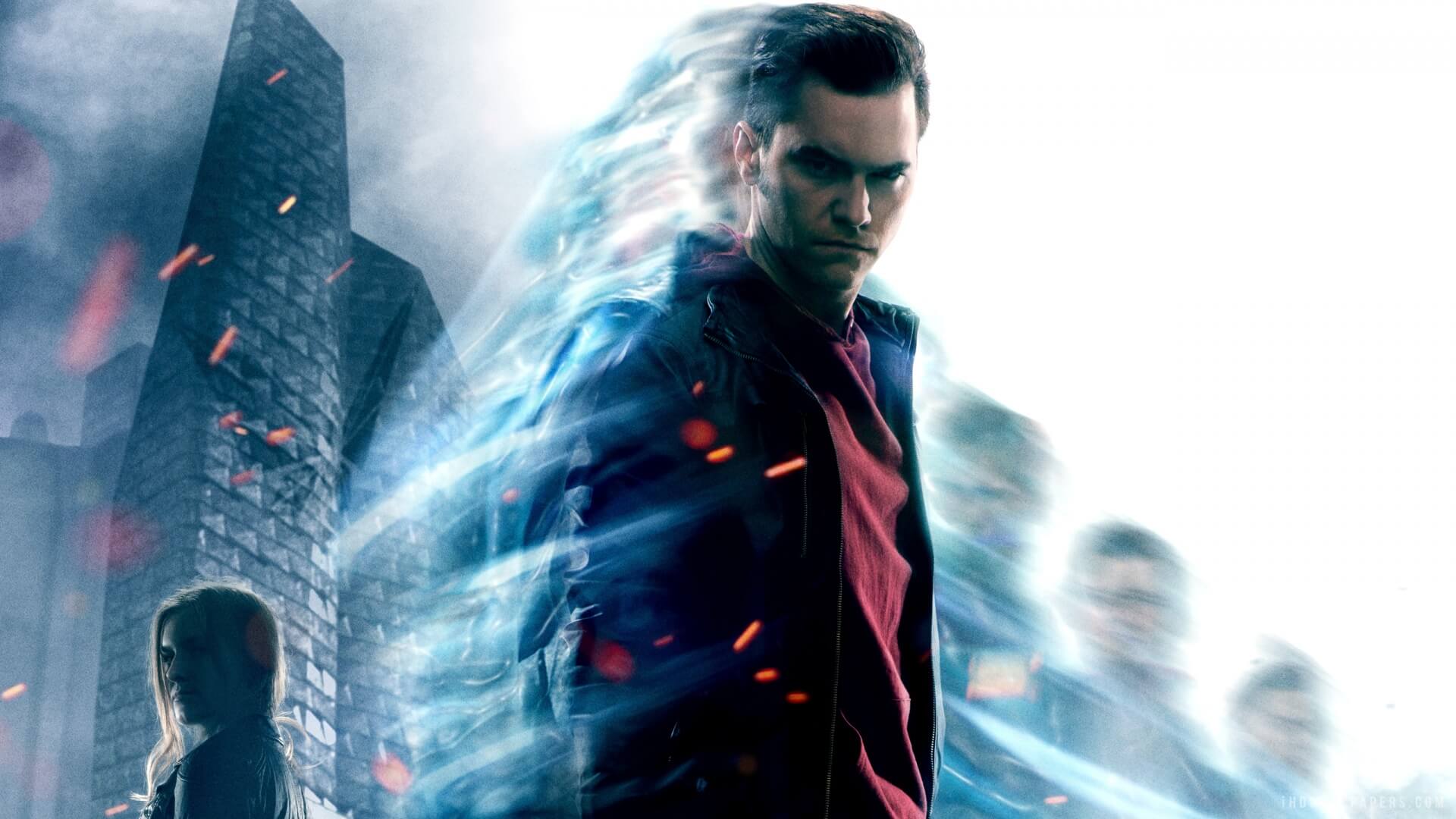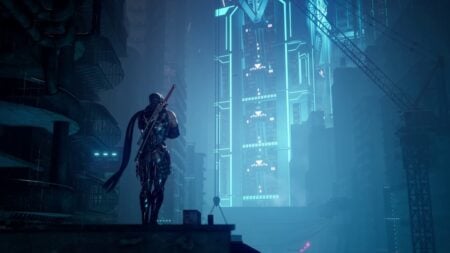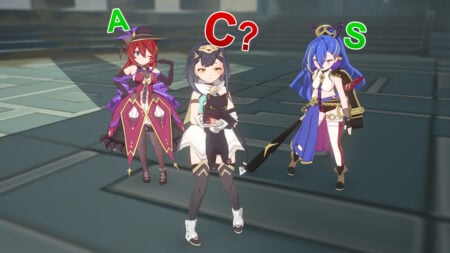Skip To...
Title: Quantum Break
Version Tested On: PC
Available On: PC,
Developer: Remedy Entertainment
Publisher: Microsoft Studios
Genre: Action Adventure
Official Site: www.quantumbreak.com/
Release Date: September 29, 2016
Where To Buy:
Time travel is a difficult thing for any creative medium to explore, but Quantum Break certainly gives it a good shot – though it falls down when it comes to actual game-centric factors. While originally an
At its heart, Quantum Break is a narrative game. There’s platforming and gunplay and plenty of time-power muckery, but it’s the story of this title that should draw you in first and foremost. It’s all about time, traveling forward and back through it, and what exactly happens when you manage to break it. Yes, the stakes are high in Quantum Break, and it’s up to Jack Joyce, unwilling protagonist, and brother of time machine inventor William Joyce, to ensure that the odds are in their favor. As it turns out, breaking time is a lot easier than putting it back together again – but failing to do so will result in the End of Time itself.
Let’s take a closer look at this tale, and how well Quantum Break manages to deliver it as a game.
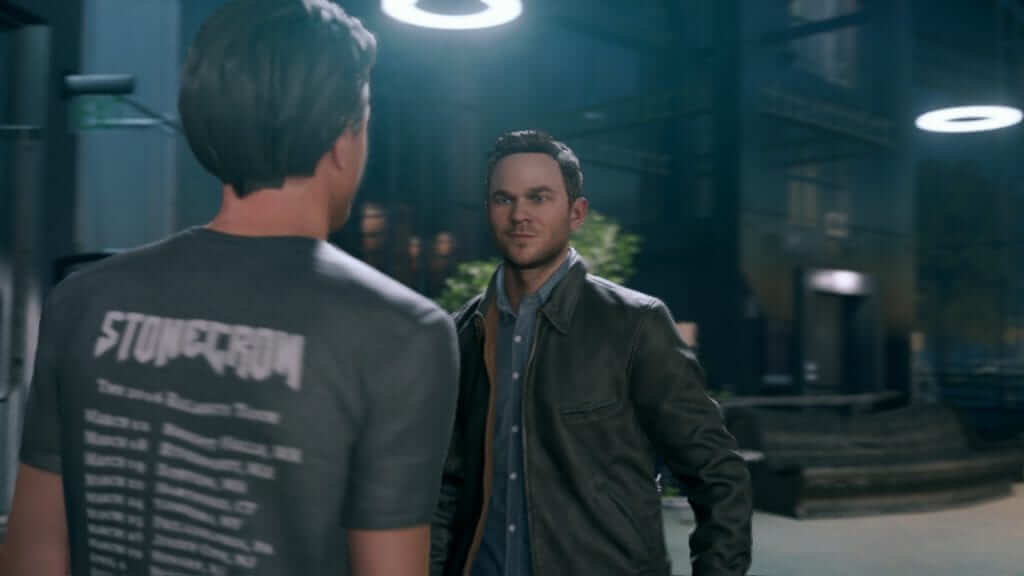
The Plot
First, we’ll tackle the most significant portion of this game: the plot. Players take on the role of the aforementioned Jack Joyce, who through a series of unfortunate events involving a “chronon particle” powered time machine and his best friend Paul Serene (business magnate), ends up creating a Fracture in time. The capital F is well-earned, as not only does this create a series of time “stutters” that could culminate in a permanent time freeze, but it also gives Jack a set of fantastic time-related powers. With a little concentration, he can freeze time, speed it up or even turn it back.
Unfortunately, however, he isn’t the only person interested in these chronons: International superbusiness Monarch Solutions does too, and they are willing to achieve their nefarious goals through any means – force included.
Monarch Solutions is taking over the @remedygames office this week. #QuantumBreak pic.twitter.com/MxujKjAEuM
— Sam Lake (@SamLakeRMD) January 18, 2016
So there’s the big question: Can Jack, with a little help from the player and a series of other minor characters, manage to fix the Fracture before its too late? It’s quite standard time-travel fare really, with plenty of back and forth through time to try and fix things in the present. The game spends a lot of time explaining the rules of time travel to the player, including the fact that you can’t actually change the past – what’s happened has happened – and that the attempt to do so in reality actually causes those events to happen in the first place.
It gets a little long-winded and repetitive at times, but the fact is that anything trying to deal with time travel is going to need to do that. Thankfully, the characters you meet along with way more than makeup for the occasionally long narrative sections and cinematics. Every character is mo-capped in great detail, with the developers even going so far as to demand real-life teeth models from the people involved, and the quality of the voice-acting is top notch. Even if there wasn’t a time-travel story going on, any of the characters you meet in your travels would be worthy of note – in fact, some of the minor characters could do with a TV show of their own.

Speaking of television shows, let’s chat about possibly the most interesting part of Quantum Break: the integrated live-action television show that explores the other side of the Joyce-Monarch conflict. Every time you finish an Act in the game, you are treated to a half-hour long episode that follows the tale of a few select characters in the universe – including the main villains. It’s a great way for the player to get a break from all the shooting and platforming and see parts of the world that otherwise may have been missed.
It’s certainly an interesting method of storytelling and helps redefine what form narrative can take in gaming. I didn’t think it would work well to begin with, but the reality is that it is an exceptional addition to the otherwise bland gameplay. I can’t imagine that it will catch on as a major technique in the games industry, but it’s refreshing nonetheless – particularly considering the big-name actors involved (including Littlefinger himself).
Beyond the narrative sections and the TV show, the game also reveals the world through an inordinate amount of collectibles. Most of these are interesting, but they can get a little boring or pointless after a while. There are only so many Monarch memos you can read before you start eyeing the escape key. Despite this, the plot definitely remains a highlight for the game and is certainly something that most people would enjoy. It’s a little more passive than most gamers might expect, but it remains engaging.

Passive it may be, but players do still have the ability to affect the story. The four TV show episodes don’t change, but the core story in the game does get affected by what are known as Junctions. These are binary choices made at the end of each Act, but not by Jack. Instead, it is the main villain who makes these decisions, each of which do genuinely have major effects on the story.
With most games that feature significant choices, you would be right to be cautious in how much you think your behavior will affect the overall game. After all, developers who invest in too many branching storylines can end up only offering a simplistic experience over a single playthrough. Quantum Break manages to avoid that by keeping the main plotline similar, with a few select characters either dying, surviving or not appearing in the game at all, depending on your earlier choices.
You won’t unlock new maps, weapons or abilities through your choices, but you will get to meet new characters. Moreover, because the choices are made by the villain rather than the hero, the player is forced to look at the decision very differently – and there are no obviously good or bad options either. If you want to see the full effects of these decisions (of which there are four), you would need to have a fresh playthrough; something which I personally consider the gold standard for games that actually give the player agency to affect the story.
The Gameplay
While Quantum Break is first-and-foremost a narrative-driven game, combat still plays a big part in the overall experience. It takes the form of a relatively formulaic shooter, sprinkled liberally with astonishing time-based superpowers. Slow others down, speed yourself up, throw down a “time shield” to protect yourself – it seems like there’s no end to what the chronon particles can do for Jack Joyce. The gunplay is a little boring and repetitive, with a limited number of weapons and enemies to use them on; but the powers manage to spice things up somewhat.
Some powers are more useful than others (time dodge being a particular favourite of mine), but it’s the ability to chain them together that really brings out the best in Quantum Break combat. There’s nothing quite like zipping around the map, freezing enemies in place with a flick of your wrist and then making them explode (with time!) to make you feel like an omnipotent time lord.
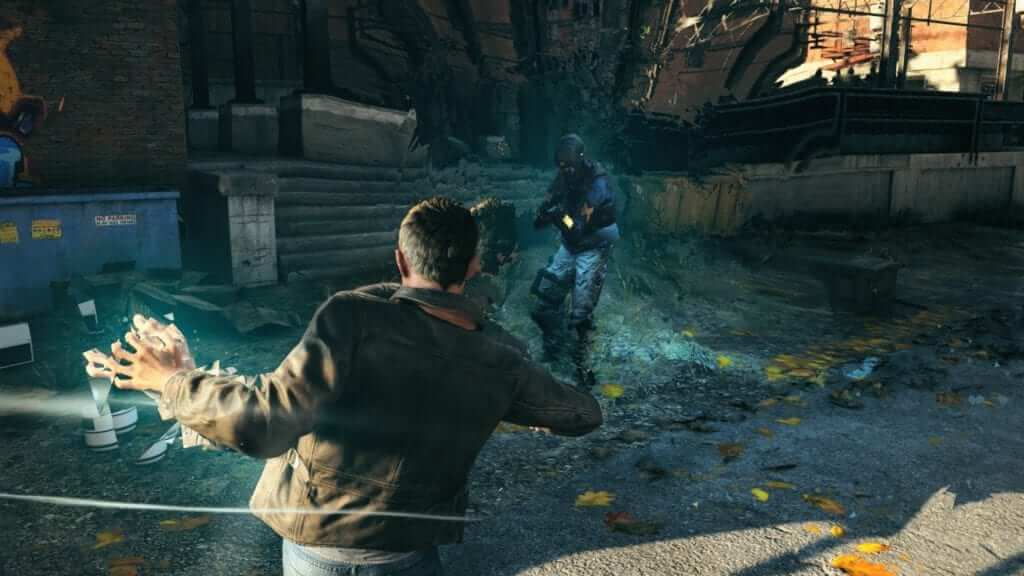
This being said, however, the game does have a bit of a problem with the enemies you actually fight. There are only really five or so different archetypes, ranging from standard troopers to snipers to heavies/superheavies, and then a special mention for the time shifters. Because the game plays about with frozen time and Jack Joyce is one of the few capable of navigating it properly, there needs to be a threat even while the world is stopped. The time shifters, or Strikers, do exactly that. They utilize similar powers as Jack himself, time dodging around the battlefield as easily as you do. It’s a shame that they have terrible AI.
While the Monarch troopers are perfectly capable of flanking you, they seem to do so at odd intervals, making it all too easy to simply run around the shooting gallery and pick them off one by one. Further, they often ignore cover entirely, preferring to charge straight at you, guns blazing. As such, most shooting encounters are resolved the exact same way. Heavies, troopers, and snipers each need slightly different tactics to defeat, but not so much that you have to plan ahead. It ends up being simplistic and repetitive.
Further, while the game does feature cover in the firefights, there are very few opportunities that you will find you need to use them – and it’s actually quite difficult to do so. There’s no lock-to-cover option, while the time powers themselves often make them completely obsolete. Why bother with cover when you can simply throw down an impenetrable wall of your own that also heals you and lets you shoot back at enemies? Perhaps this is intentional on the part of the developers, but it seems a shame that a game that uses shooting galleries so heavily doesn’t make use of a cover system to a greater degree.
Puzzles, Graphics and A Port Too Far?
Beyond the shooting, the gameplay also features a few puzzles, though these were few and far between. Most of the non-combat sections were either explorative, platforming or a few light puzzles that occasionally made use of your time powers. They were rather uninspired and predictable though, and didn’t really live up to the potential that literally breaking physics could have. While the ideas in them were interesting – such as turning back time in order to use a falling platform as an elevator instead – they were mostly just very simple.
The platforming sections on PC were particularly frustrating, mostly due to the continued use of character momentum. I often found myself teetering on the edge of a section after my character continued to move even after the W key was released. This eased after switching to a controller, but the poor PC control scheme belies its original life as a console game.
Over things that didn’t quite go so well with the port are the graphics. While the mocapping was great and the effects were brilliant, as were the time freeze physics, it’s clear that there are still some optimization issues. I have a slightly aging PC now, but it generally can play most new AAA games at 60fps on relatively high settings – though not ultra. This puppy was kicking 30fps on medium. Not a huge deal, as I’m not one to put too much emphasis on graphical fidelity, but it was a bit of a shame to stutter through some otherwise very cool cinematic parts.
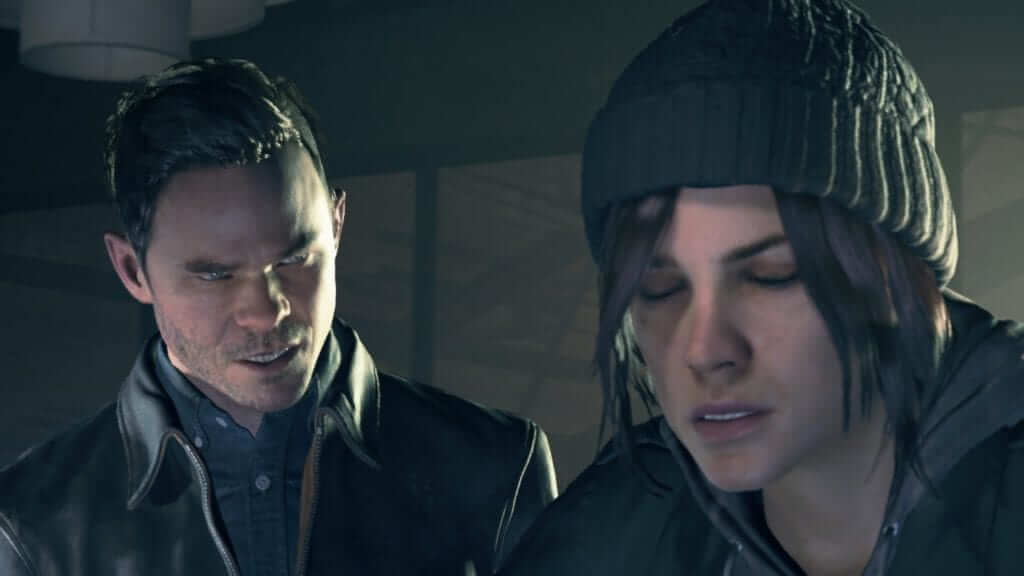
Overall, Quantum Break offers an interesting take on a narrative-driven game and has some fantastic acting moments and brilliant graphics – particularly the time effects. Combat can be fun at times but is ultimately very limited in what it offers in terms of diverse gameplay. The time powers are fun to muck about with, but their use in puzzles doesn’t truly live up to their potential. While I applaud the integration of the TV show and the game, I feel the presentation of the content would suit an actual TV show instead. The sheer amount of exposition and cinematics involved make it clear that some gameplay sacrifices were made, and I reckon going all the way may have resulted in a better product. That being said, certainly an enjoyable gaming experience, if not a particularly memorable one.
Not a fantastic game, but not a terrible one either – a fun jaunt, but essentially bland and formulaic. An average score for an average game that tries to do something a little different – and mostly succeeds.
- Gameplay: Time-based superpowers with semi-cover-based shooting galleries.
- Graphics: Motion captured actors, gorgeous environments, fantastic explosive and time-freeze effects.
- Sound: Voice acting is a particular highlight, but solid throughout.
- Presentation: Somewhat simplistic gameplay, but narrative and characters make up for it.
[review]

